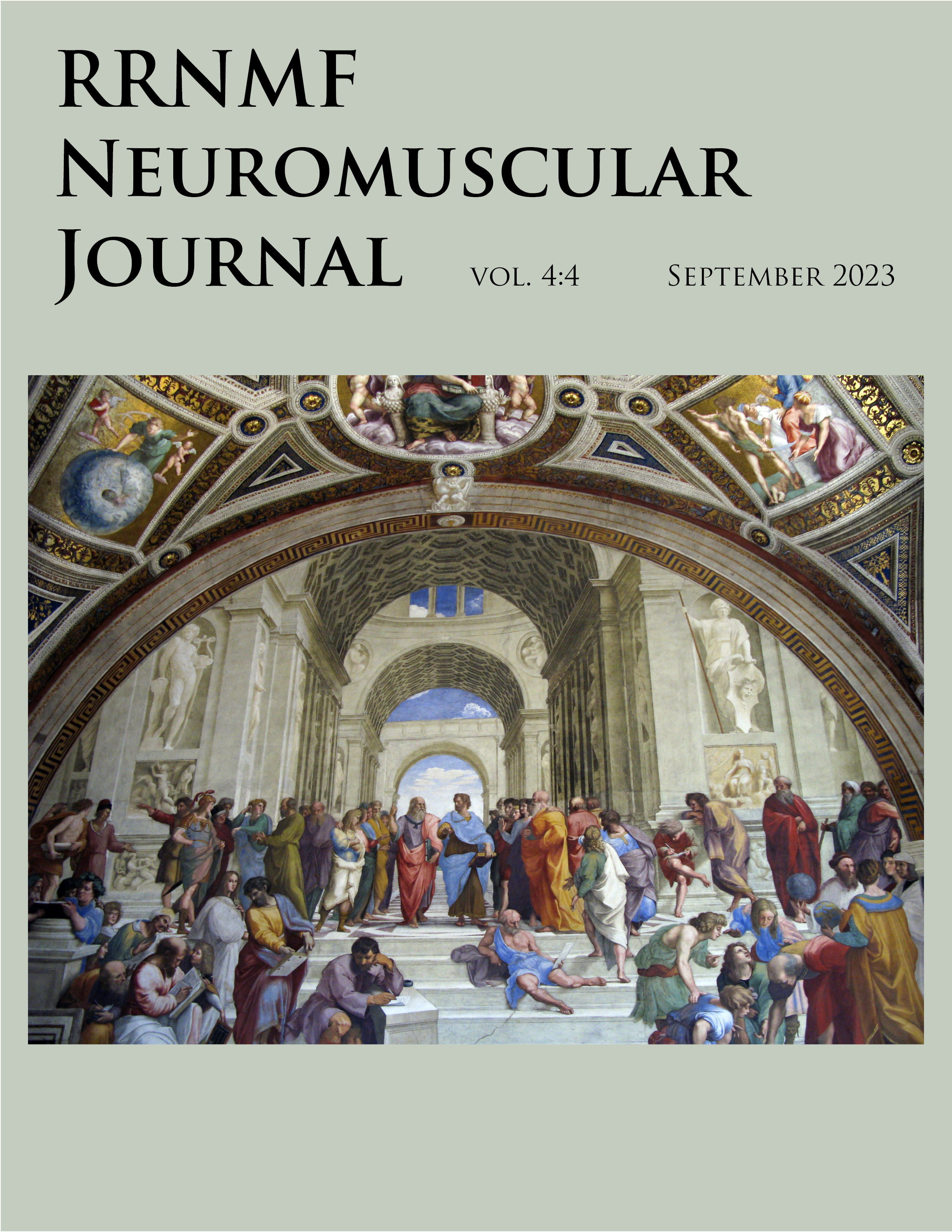Isolated hypoglossal nerve palsy secondary to basilar artery compression: A case report and reviewing of electrodiagnostic evaluation of the hypoglossal nerve
DOI:
https://doi.org/10.17161/rrnmf.v4i4.20475Keywords:
Vascular compression, isolated hypoglossal nerve palsy, basilar arteryAbstract
Introduction: Hypoglossal nerve palsy causes ipsilateral tongue weakness, commonly presenting with dysphagia, dysarthria, or perceived tongue weakness. Vascular compression is a rare cause of isolated hypoglossal nerve palsies. Imaging and serologic labs are common parts of the evaluation of hypoglossal nerve palsies. Though less commonly used, electrodiagnostic studies can be important in the diagnostic evaluation of hypoglossal nerve palsies.
Case: We report a case of a 53-year-old man with dysphagia found to have a left hypoglossal nerve palsy secondary to vascular compression from the basilar artery confirmed by electrodiagnostic and radiographic studies and we provide a review of the electrodiagnostic evaluation of the hypoglossal nerve.
Downloads
References
Boban, M., Brinar, V. V., Habek, M., & Radoš, M. (2007). Isolated hypoglossal nerve palsy: A diagnostic challenge. European Neurology, 58(3), 177–181. https://doi.org/10.1159/000104720
Cheong, J. H., Kim, J. M., Yang, M. S., & Kim, C. H. (2011). Resolution of isolated unilateral hypoglossal nerve palsy following microvascular decompression of the intracranial vertebral artery. Journal of Korean Neurosurgical Society, 49(3), 167. https://doi.org/10.3340/jkns.2011.49.3.167
Goto, T., Ekuma, M. E., Hanaoka, Y., Kanaya, K., Horiuchi, T., Hongo, K., & Ohaegbulam, S. C. (2017). Unilateral isolated hypoglossal nerve palsy due to pathologically adherent pica fusiform aneurysm – a case report. Surgical Neurology International, 8(1), 114. https://doi.org/10.4103/sni.sni_279_16
Hikichi, H., Ueno, T., Iwamura, M., Nishijima, H., Arai, A., Suzuki, C., Midorikawa, H., Nunomura, J.-ichi, & Tomiyama, M. (2020). Hypoglossal nerve palsy due to compression by a persistent primitive hypoglossal artery: Case report. Journal of Stroke and Cerebrovascular Diseases, 29(2), 104459. https://doi.org/10.1016/j.jstrokecerebrovasdis.2019.104459
Perotto, A., & Delagi, E. F. (2011). Anatomical guide for the electromyographer: The limbs and Trunk. Charles C. Thomas Publisher.
Redmond, M. D., & Di Benedetto, M. (1988). Hypoglossal nerve conduction in normal subjects. Muscle & Nerve, 11(5), 447–452. https://doi.org/10.1002/mus.880110506
Skorpil V, Zverina E. Conduction velocity in brain nerves in man. Electromyography 1962;2:306–309.
Stino, A. M., & Smith, B. E. (2018). Electrophysiology of cranial nerve testing. Journal of Clinical Neurophysiology, 35(1), 59–64. https://doi.org/10.1097/wnp.0000000000000439
Stino, A. M., Smith, B. E., Temkit, M., & Reddy, S. N. (2016). Hypoglossal nerve palsy: 245 cases. Muscle & Nerve, 54(6), 1050–1054. https://doi.org/10.1002/mus.25197
Downloads
Published
Issue
Section
License
Copyright (c) 2023 Spencer Osbourn MD, Tiffany Pike-Lee MD

This work is licensed under a Creative Commons Attribution-NonCommercial-NoDerivatives 4.0 International License.

